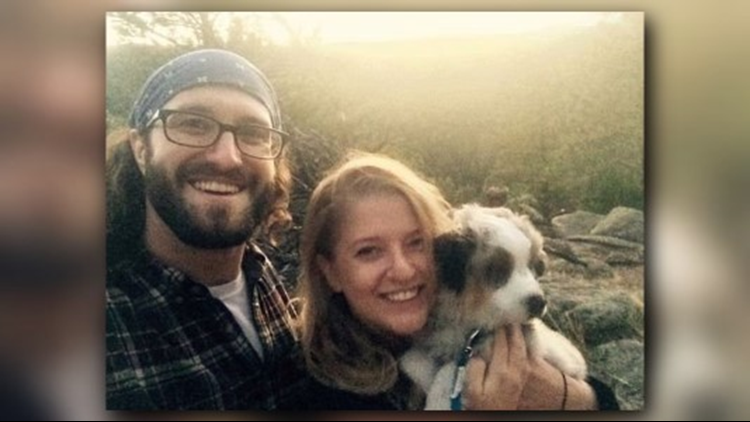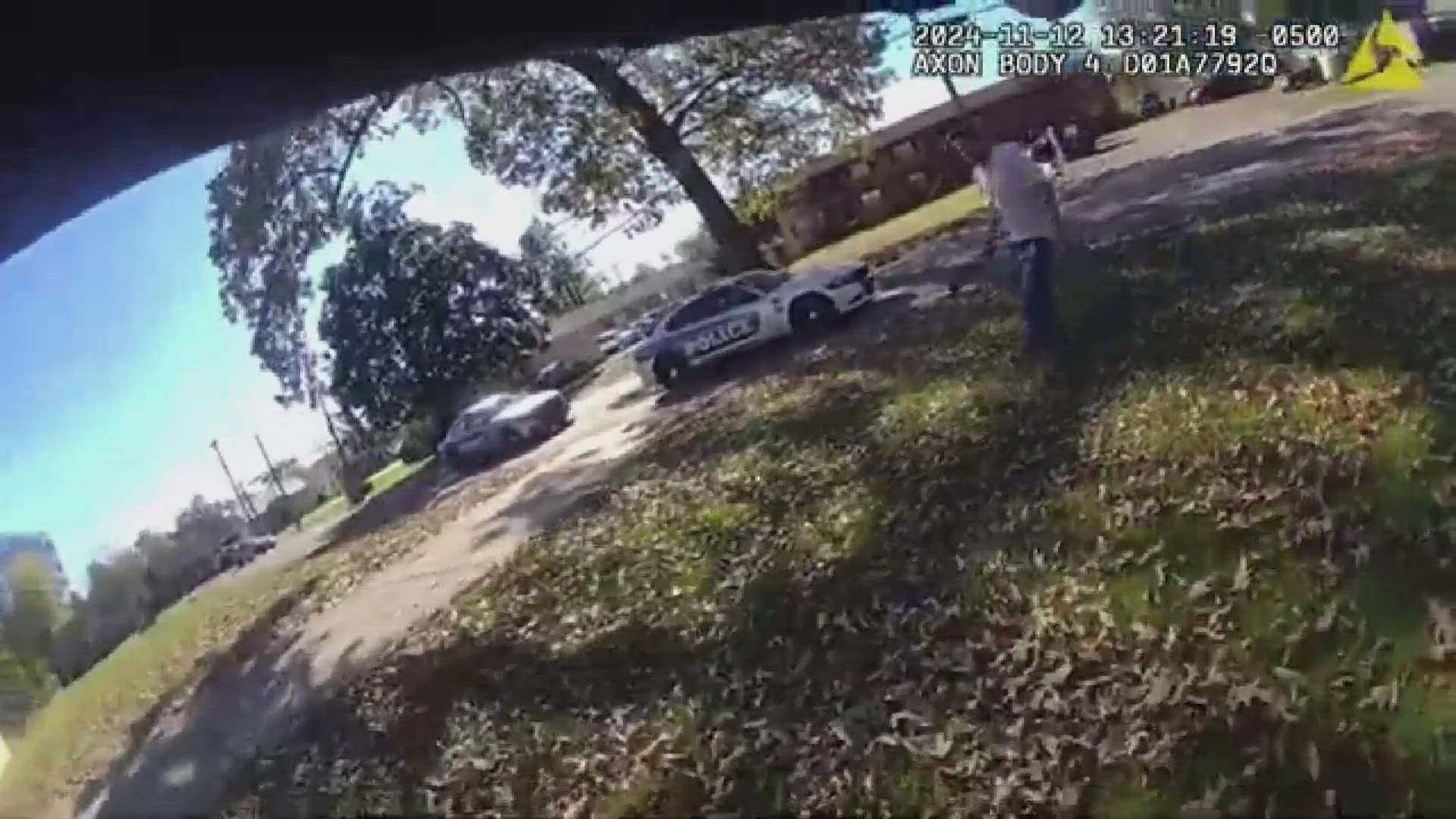Heather Starbuck had just gotten engaged in Boulder, Colorado, at the end of last summer.
Together with her fiance, Matt Adams, they planned on keeping their engagement a secret until they could celebrate the news with all of their friends and family at one time.
But before they could even start thinking about wedding details, Adams, 30, was found dead from a heroin overdose on September 12. He was two years sober at the time of his death.
Almost eight months later, Starbuck is far away from their once shared home in Boulder — in an interview with the Citizen Times, she was standing on top of Max Patch, a bald mountain in Madison County, celebrating her 30th day on the Appalachian Trail.
Starbuck, or 'Kamikaze', as she's known to fellow hikers, is trekking the entirety of the AT in honor of her late fiance, who struggled with a substance use disorder consisting of opioids for almost a decade.
"In his recovery, Matt hiked all the time with a signature purple bandanna and it really helped him stay stable and happy," said Starbuck, 26, while wind whipped around her. "Then when everything was unraveling and out of control after he died, I was depressed and couldn’t get out of bed, I felt like I couldn't move, like I was going to die because of my grief."
But Starbuck pushed through her crippling sadness and took to researching everything there was to know about the opioid crisis — she soon learned that the Appalachia region is at the heart of the epidemic.
Ohio, West Virginia, Kentucky, Pennsylvania, Tennessee, Virginia and North Carolina have been battered by skyrocketing overdose death rates, with over 54,000 deaths since 1999 in those areas combined, according to the Centers for Disease Control.
Residents of the Appalachian Region are 55% more likely to die from a drug overdose than residents of the rest of the U.S., the CDC reported.
When Starbuck discovered these alarming truths, she decided to not just walk for Adams, but for all those struggling with the disease of addiction.
"It was a calling for me to heal and try to connect with people and learn from people from the Western North Carolina region and make sense with the madness that’s going on," she said.
Along her route, Starbuck has met with recovery groups and parents who have also lost a child to an overdose.
She spoke to peer counselors and those in recovery at Snowbird Treatment Center in Cherokee County, where 54.5 people die of an opioid overdose per 100,000 every year — Cherokee has the highest overdose death rate in the Appalachia region in North Carolina.
Starbuck was moved to tears when a mother shared the story of her son's death because of fentanyl-laced heroin, an addiction that originally started from pills, just like Adams.
"This disease is not a shameful thing, it is a mental illness, and it could be anyone's kid, fiance, sibling, because it does not discriminate," Starbuck said. "The pill craze has touched all communities and you have to support everyone in recovery in order to not make them feel more isolated."
Adams had always had an addictive personality, Starbuck said, but it was only after he was prescribed Oxycontin for an injury in his early twenties did he start to change.
After just a few pills, Adams was hooked. When the pills ran out and became too expensive, a friend of his told him he had the perfect solution.
"Matt told me he turned to black tar heroin, and for six years before we met, he struggled with the addiction," Starbuck said.
He started to get his life on track shortly before they started dating, and for two years, Starbuck and Adams shared a life together without opioids.
She was shocked to learn his latest relapse had killed him.
"He loved so deeply, was so kind, without a mean bone in his body," Starbuck said.
Starbuck surprised herself when she decided to take on the physical and mental task of hiking the roughly 2,220-mile long AT. She had never started a campfire in her life or had ever gone backpacking.
She bought the bulk of her gear 48-hours before hitting the trail and has learned many lessons about survival along the way.
"That is why they call me Kamikaze," Starbuck said. "I have been out of my mind since my whole world shattered, and so I've just thrown up my hands, leaned into the pain and trusted whatever it is that guided me here."
The highlight of her time on the trail so far is how honest she can be with fellow hikers about the pain she is going through. She said she cries daily, but has found solace and comfort in nature.
"It feels most natural being outside in the woods because I can openly talk about him and his drugs and really connect with people," Starbuck said. "That’s what I needed."
Starbuck hikes with a purple bandanna somewhere on her person visible to all those who cross her path on the trail. When she shares Adams' story with a new friend or a total stranger, she gives them a purple bandanna, too.
There lacks a nationally recognized symbol for those struggling with opioid addiction and their recovery, she said, and the purple ribbon is, among other things, a symbol of overdose awareness.
"It's a true symbol of solidarity for those on the road to opioid recovery, one of the hardest addictions to overcome," Starbuck said. "Matt always wore his purple bandanna, so it is also a reminder of Matt. Of this beautiful person who struggled every single day, against a fight I could never even imagine."



